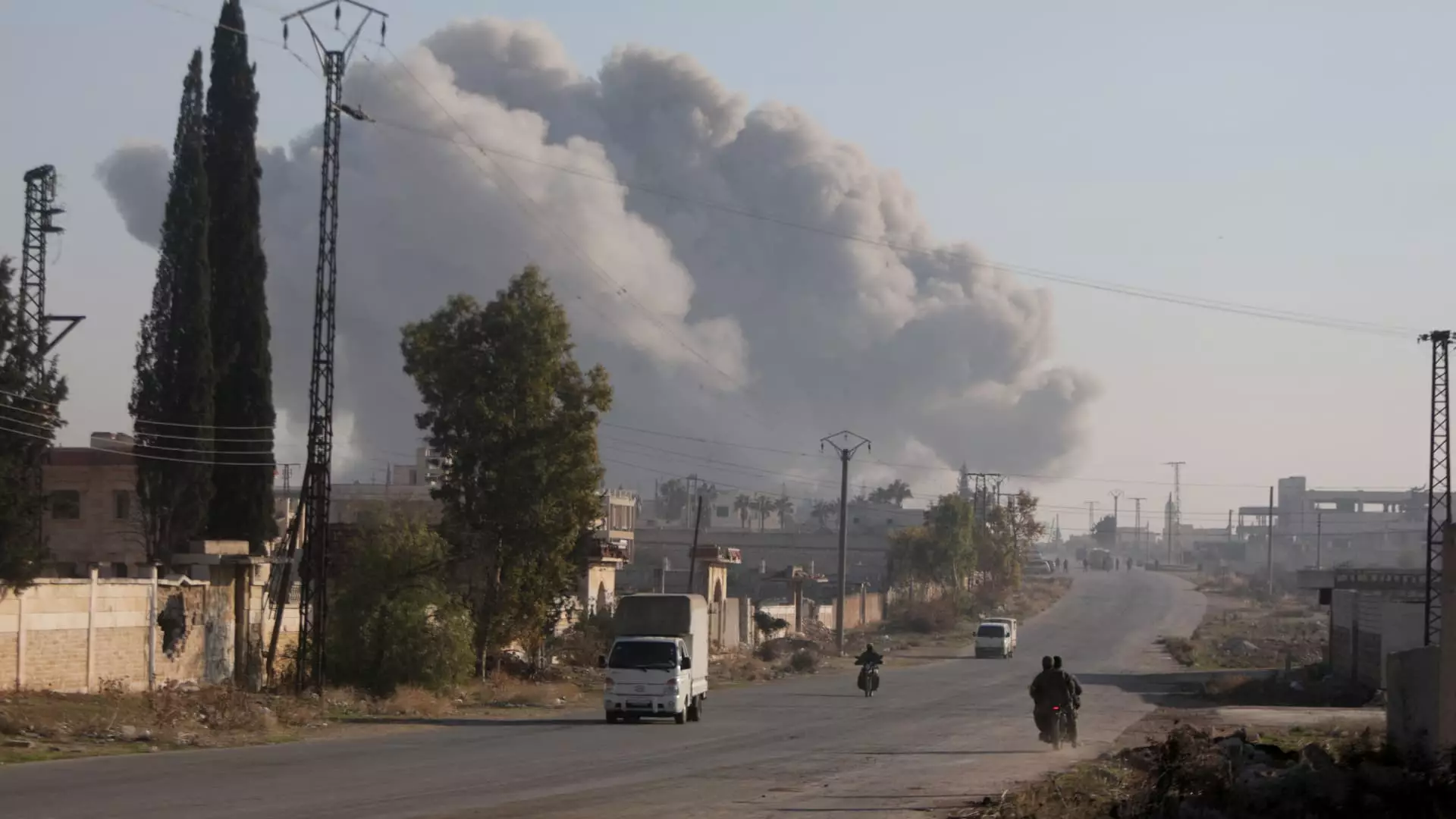Recent events in Aleppo, Syria’s most significant urban center, have reignited fears of protracted conflict in a region already beleaguered by years of war. Following an unexpected offensive by insurgent factions, reports indicate that this is the first time since 2016 that armed opposition has managed to breach the city, prompting both chaos and an exodus of residents. Eyewitness accounts describe scenes of terror as residents fled amidst heavy gunfire and missile attacks. This latest development not only sheds light on the current state of the Syrian civil war but also reflects the broader geopolitical tensions at play in the region.
The Syrian Observatory for Human Rights reported that numerous combatants from both sides were killed during this outbreak of violence. This escalation comes against a backdrop of other active conflicts involving Israel in Gaza and Lebanon, underscoring the pervasive instability that characterizes not just Syria, but much of the Middle East. With Aleppo having not seen insurgent activity since opposition forces were expelled from its eastern neighborhoods nearly seven years ago, this recent attack represents a significant shift in the dynamics of power within the region.
The Underlying Factors of Insurgent Resurgence
Several factors contributed to this sudden resurgence of insurgent forces, primarily linked to the weaknesses exhibited by the Syrian government since the conclusion of the Battle of Aleppo in 2016. Robert Ford, the last U.S. ambassador to Syria, suggested that the latest developments showcase a marked decline in the capabilities of the Syrian Armed Forces, describing them as “extremely weak.” Incidents of government forces retreating from positions have compounded this scenario, allowing insurgents to take advantage of the situation with surprising swiftness and efficacy.
A closer examination reveals that these events coincide with broader geopolitical distractions faced by allied forces such as Iran and Hezbollah. These groups have found themselves embroiled in their battles elsewhere, which may have inadvertently emboldened insurgent factions to launch their offensive. Analysts have noted that the absence of effective military support has created a window of opportunity for opposition groups, further escalating tensions in the region.
The conflict in Aleppo serves as a reminder of the complex web of external involvement that has long characterized the Syrian civil war. Key players like Russia, Turkey, and the United States not only have vested interests in the region but also partake in ongoing diplomatic efforts that influence ground realities.
Following weeks of low-level hostility, the recent surge of violence seemed to catch many off guard. Turkey, for example, which has historically supported opposition groups, failed to mitigate the increasing aggression of Syrian government forces. This breach of what was a tentative ceasefire agreement can be traced back to a failure of diplomacy, highlighting the intricacies of international relations in this multifaceted conflict.
Meanwhile, the Syrian government has condemned these insurgent actions as violations of its sovereignty, claiming that they are part of a coordinated effort by foreign entities, including the U.S. and Israel, to destabilize the region further. The Kremlin has echoed similar sentiments, labeling the attack as an affront to Syrian sovereignty and promising to support the government in re-establishing control.
The contemporary landscape in Aleppo not only raises questions about the stability of this strategically significant city but also serves as a bellwether for the broader conflict that has engulfed Syria since 2011. The 2016 battle for Aleppo marked a pivotal turning point in the civil war, with government forces securing a crucial victory. The recent incursions signal that the opposition’s resolve remains, and with external influences shifting, the future of Aleppo hangs in the balance.
As violence escalates once more, the civilian populace finds itself at the heart of the conflict with devastating consequences. Reports of civilian casualties, including the tragic loss of life among students in Aleppo, paint a grim picture of the humanitarian toll that this resurgence of violence could entail. The heavy weaponry and advanced tactics employed by insurgents, including drone attacks, have introduced new dangers that complicate an already dire situation.
The recent offensive by insurgent forces in Aleppo is emblematic of the chaos that continues to afflict Syria. As the conflict enters a new phase characterized by shifting alliances and renewed violence, the prospects for peace remain uncertain. Ongoing geopolitical maneuvers and the involvement of external powers will shape not only the future of Aleppo but also the broader trajectory of the Syrian crisis. Understanding these dynamics will be essential for any meaningful efforts to broker peace and stability in a region where the scars of war run deep. The world watches closely, aware that the costs of inaction and miscalculation are exceedingly high.


Leave a Reply